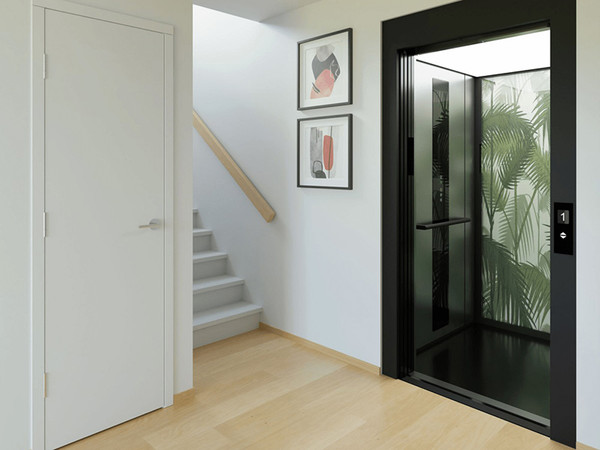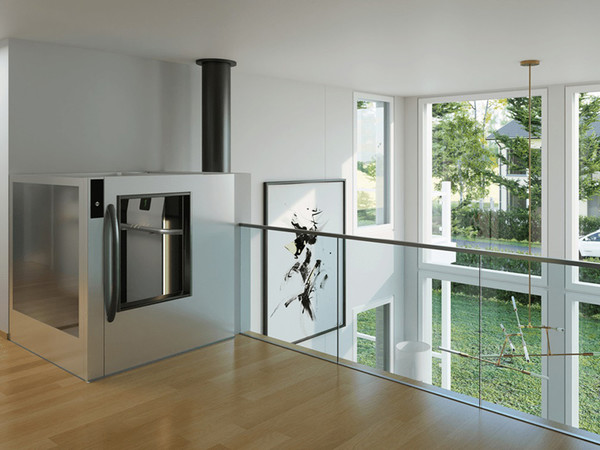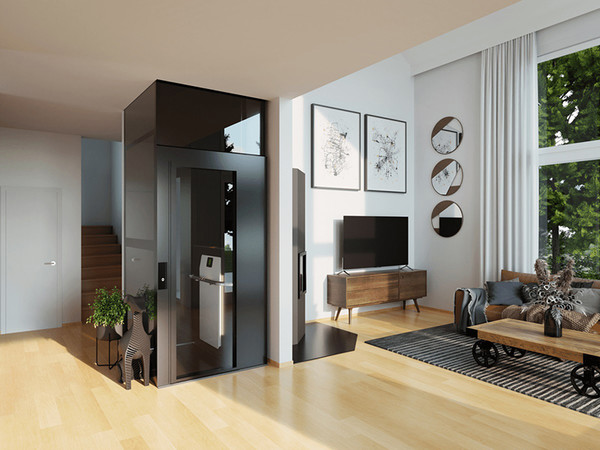Five prejudices against home lifts
Overpriced, cumbersome, unattractive – these are the adjectives that come to many people's minds when it comes to home lifts. A manufacturer of home lifts wants to dispel these prejudices.
In the own four walls one would like to do without it if possible, in order to avoid complex rebuilding measures. Cibes Lift is a European manufacturer of home lifts. It is aware of the prejudices against home lifts, which it would like to dispel and show why a lift is also a good way to connect several levels in private residential buildings.
Prejudice 1: It is almost impossible to retrofit a lift
 Photo: © Cibes
Photo: © CibesA home lift is a slow-moving lift that is particularly suitable for private buildings. It is more space-saving than a conventional lift, for example, the Cibes models do not require a pit or a machine room. The machine room is already integrated in the lift, so hardly any construction work is required.
In contrast to a stair lift, a home lift can even be used with a wheelchair and cover several floors at once. So-called platform lifts are characterised by the fact that only the platform moves upwards in a shaft provided and the walls do not move with it. Thanks to a modular concept, these lifts can be integrated into almost any building – with minimal structural adjustments.
Prejudice 2: A lift needs a lot of space
Lifts are often confused with the oversized elevators in department stores or hotels. However, the variants for private residential buildings are manufactured in much smaller sizes and can thus be installed in any environment - both indoors and outdoors.
Only minimal architectural adjustments are required for installation: a Cibes platform lift comes with a shaft but can also be installed in an existing on-site wall shaft. Thus, the smallest home lift from Cibes Lift requires just an area of 100 x 120 cm.
Prejudice 3: A home lift is far too expensive
 Photo: © Cibes
Photo: © CibesFor fear of high costs, home lifts are sometimes not even considered. How much a lift ultimately costs depend on various factors. The material used as well as the installation of the lift have an influence on it. The material costs depend on the construction method and the respective supplier. With regard to the installation, the longer it takes and the more complicated the installation, the more expensive the lift will be.
According to the company, Cibes lifts are self-supporting structures that come with a lift shaft already installed from the factory. This makes the home lifts not only quite inexpensive, but moreover, they can be installed in just a few days, stresses the company. The energy label also plays an important role in the follow-up costs. Lifts that work with a particularly ecological drive are supplied with normal household electricity via the socket and cause lower electricity costs than a modern washing machine.
Prejudice 4: A home lift reduces the value of the property
Accessibility has become an important criterion in the purchase of a property. Especially if the house or apartment has or is to have several floors. Stairs can become an obstacle later on.
The cost of home lifts has dropped in recent years, making the installation of a home lift affordable for home builders and owners. A lift with an attractive design can increase the value of the property.
Prejudice 5: A home lift is only for old people or people with a handicap
 Photo: © Cibes
Photo: © CibesIt is true that accessibility plays a major role in old age. Nevertheless, it makes sense to make provisions early on, as you can already benefit from the advantages today. Pregnancy, for example, can become a burden in the last few weeks and constant stair climbing a challenge. Once the baby has arrived, toys, nappies, laundry, bags etc. have to be transported from one level to another; the same applies to heavy shopping and crates of drinks.
Even those who have already broken their leg will appreciate a barrier-free environment. The same applies to travel fans: if a suitcase weighs 20 kg, you'll be glad to have to carry it as little as possible. In a barrier-free home, it can be rolled to the exit in a relaxed manner and the strain is reduced. These examples can be continued at will and show what quality of life accessibility also offers people without disabilities.
More information: www.cibeslift.com


























Write a comment